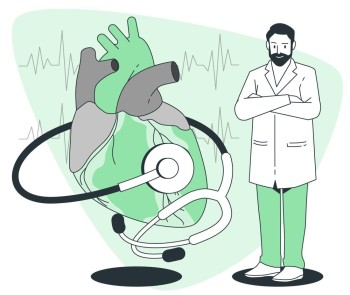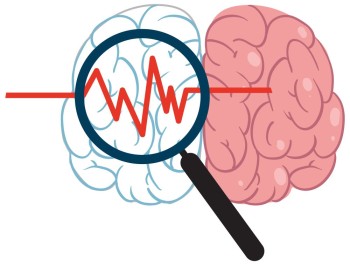
In the realm of diagnostic imaging, MRI venography stands out as a remarkable technique for delving into the intricate vascular landscape of the limbs.
MRI Venography
of Limbs with Cost
MRI Venography
of Limbs: A Descriptive Exploration
In the realm of diagnostic imaging, MRI venography stands out as a remarkable technique for delving into the intricate vascular landscape of the limbs. This non-invasive procedure utilizes magnetic fields and radio waves to create detailed images, allowing clinicians to navigate through the veins with unparalleled precision.
Unveiling the Intricate Venous Landscape:
Picture a journey into the human body's vascular marvels, where MRI venography acts as a skilled guide, revealing the intricate network of veins in the limbs. It offers a visual tapestry that goes beyond the surface, showcasing the complexity of the venous system.
Safety in Non-Invasiveness:
What sets MRI venography apart is its commitment to safety. By avoiding ionizing radiation and embracing a non-invasive approach, it provides a secure avenue for exploring the vascular structures, ensuring patient well-being throughout the imaging process.
The Symphony of Image Capture:
As the patient embarks on this diagnostic voyage, the procedure orchestrates a symphony of image capture. Magnetic fields and radio waves dance together to create high-resolution images, offering a detailed map of the venous pathways within the limbs.
Sequences and Parameters Demystified:
The technical wizardry of MRI venography involves specific sequences and parameters. This decoding process ensures optimal visualization, turning the imaging session into an art form that captures the nuances of venous anatomy.
Navigating Clinical Indications:
In the realm of clinical indications, MRI venography serves as a compass, guiding clinicians through the detection of conditions such as deep vein thrombosis (DVT) and venous insufficiency. It unravels the mysteries that might otherwise remain hidden.
Radiologist's Canvas:
Interpreting the visual tapestry becomes an art form for radiologists. Armed with expertise, they navigate through the images, identifying venous anomalies and contributing to precise diagnoses with the skill of seasoned explorers.
Beyond Comparison:
Comparing MRI venography with traditional methods like ultrasound and CT venography reveals a distinctive advantage. It sails beyond the waves of comparison, offering unique insights into the soft tissues and venous structures that other imaging techniques may not capture.
Patient Comfort in Focus:
Patient concerns are acknowledged, and the process addresses them with the gentle touch of non-invasiveness. MRI venography ensures that the imaging experience is not only accurate but also comfortable for individuals undergoing the procedure.
Limitations and Considerations:
While navigating the diagnostic sea, considerations such as the use of contrast agents and contraindications become vital. Understanding these aspects ensures a balanced approach to patient safety.
Applications Beyond Diagnosis:
MRI venography isn't merely a diagnostic tool; it's a maestro in vascular medicine. Its diagnostic prowess contributes to effective treatment planning, providing a blueprint for medical endeavors.
Gazing into the Future:
The future holds promise with ongoing technological innovations. The pinnacle of technological advancement in MRI venography hints at expanded diagnostic frontiers, offering a glimpse into a cosmos of possibilities.
Culmination of Vascular Insights:
As the exploration concludes, MRI venography leaves behind a culmination of insights into the vascular world. It stands as a milestone in medical imaging, enriching our understanding of the intricate tapestry woven within our limbs.
In the quest to unveil the mysteries of the vascular system, MRI venography emerges as a beacon of precision and safety, guiding both clinicians and patients through the intricate landscapes of diagnostic imaging.
Frequently Asked
Questions about MRI Venography of Limbs
Is MRI venography painful?
No, MRI venography is generally painless. It involves lying still on a comfortable table as the machine captures detailed images of the venous system. Patients might experience a mild sensation due to the magnetic fields, but it is not considered painful.
How long does an
MRI venography session take?
The duration of an MRI venography session varies but typically lasts between 30 to 60 minutes. The actual time depends on factors such as the specific imaging requirements, the area being examined, and the patient's individual characteristics.
Are there any risks associated with MRI venography?
MRI venography is considered safe and does not involve ionizing radiation, unlike some other imaging techniques. However, certain individuals with metal implants or pacemakers may have contraindications. It's crucial to inform healthcare providers of any medical history to ensure a safe imaging experience.
Can everyone undergo MRI venography?
While MRI venography is generally safe, certain conditions or medical implants may restrict some individuals from undergoing the procedure. Pregnant women are often advised to avoid unnecessary exposure to strong magnetic fields. Consultation with a healthcare provider helps determine the suitability for MRI venography based on individual health factors.
What information does MRI venography provide that other imaging methods may not?
MRI venography excels in providing detailed images of soft tissues, making it particularly effective for visualizing the intricate venous landscape. It offers advantages over traditional methods like ultrasound and CT venography by capturing high-resolution images without exposing patients to ionizing radiation.
These FAQs aim to address common queries about MRI venography, ensuring a better understanding of the procedure, its benefits, and considerations. Always consult with healthcare professionals for personalized information based on individual health circumstances.
(0)
Login to continue



